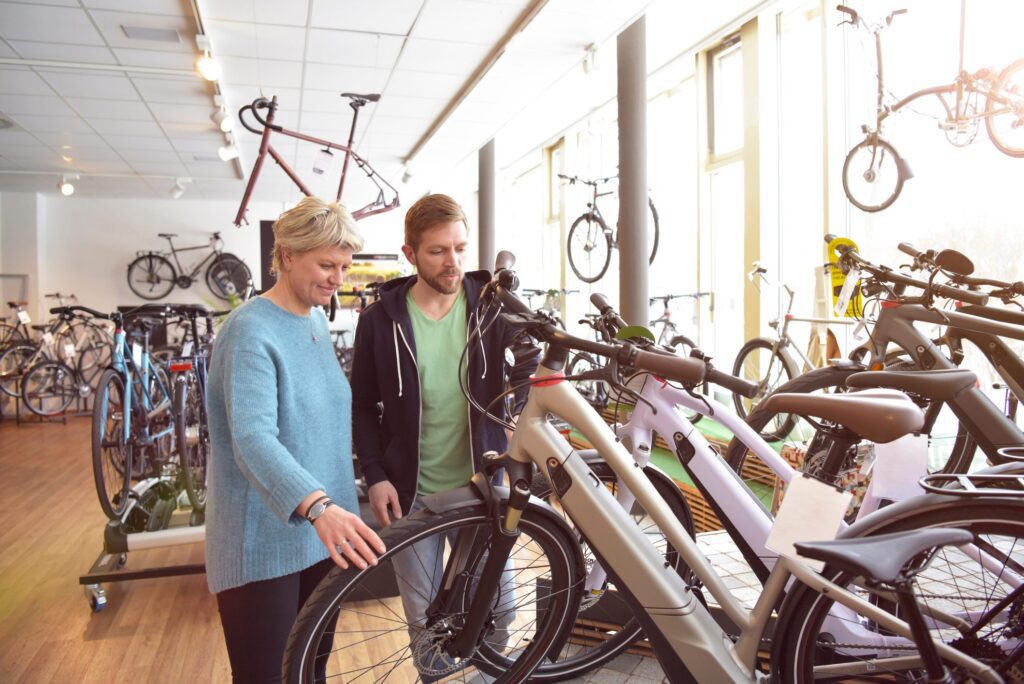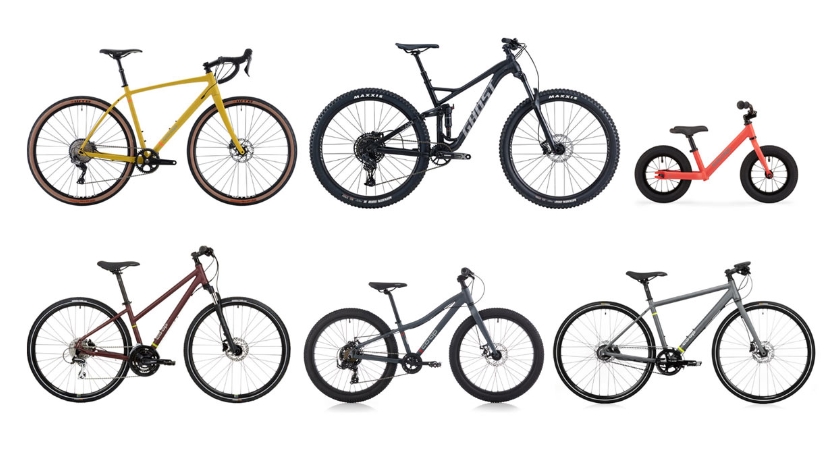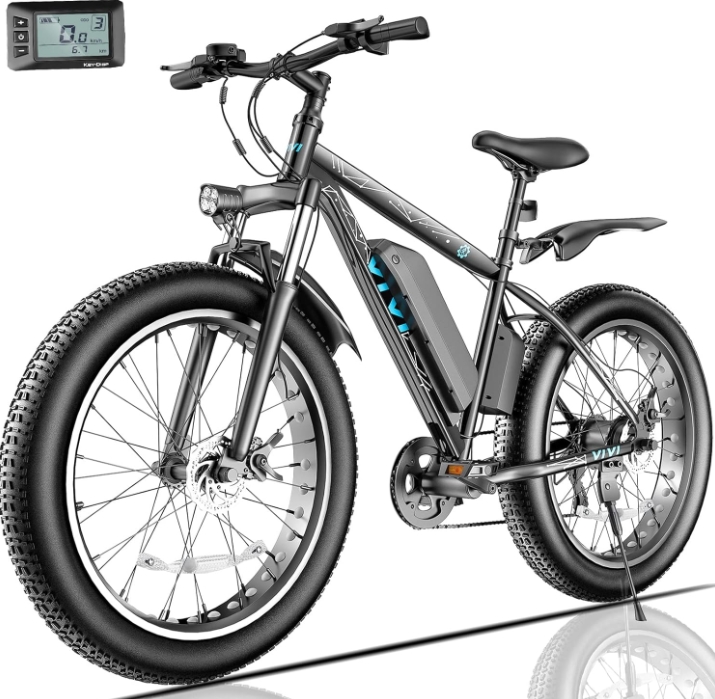Strategies for Success in a Booming Industry
The electric bike (e-bike) market is experiencing unprecedented growth, with global sales projected to reach $71.5 billion by 2030, driven by urbanization, environmental awareness, and advancements in battery technology. For e-bike showroom owners, this presents a golden opportunity to capture a share of this expanding market. However, standing out in a competitive landscape requires a strategic approach to marketing. How to market an e-bike showroom in 2025 involves leveraging digital tools, community engagement, and innovative branding to attract and retain customers. This article outlines actionable strategies to elevate your showroom’s visibility, drive sales, and build a loyal customer base in 2025.
Understanding the E-Bike Market in 2025
The e-bike market is diverse, catering to commuters, adventure enthusiasts, and businesses seeking sustainable delivery solutions. In 2025, the market is expected to reach $38.08 billion globally, with a compound annual growth rate (CAGR) of 7.98% through 2029. Urban commuters dominate, holding 82% of the market share, while cargo and trekking e-bikes are the fastest-growing segments. Knowing these trends is crucial for tailoring your marketing efforts to meet customer needs. How to market an e-bike showroom in 2025 starts with understanding your audience and the unique value your showroom offers.
Key Market Trends
Several trends are shaping the e-bike industry in 2025. Advancements in lithium-ion batteries offer longer ranges (up to 70 miles) and faster charging, while smart connectivity features like GPS tracking and app integration enhance user experience. Lightweight designs using carbon fiber frames are making e-bikes more appealing, and subscription models are gaining traction among younger, tech-savvy consumers. Additionally, government incentives, such as the U.S.’s $1,500 federal rebate for e-bike purchases, are boosting adoption. Aligning your marketing with these trends ensures relevance and appeal.
Identifying Your Target Audience
Your showroom’s success depends on targeting the right customers. Urban commuters, typically aged 25–45, seek eco-friendly, cost-effective transport. Adventure seekers, often 30–50, prioritize performance e-bikes for off-road trails. Businesses, particularly in logistics, are adopting cargo e-bikes for last-mile deliveries due to their low maintenance costs ($280 annually) compared to gas-powered vehicles. How to market an e-bike showroom in 2025 requires segmenting these audiences and crafting tailored campaigns that address their specific pain points and aspirations.

Building a Strong Digital Presence
In 2025, digital marketing is non-negotiable for reaching e-bike customers, with 70% of consumers researching products online before purchasing. A robust online presence amplifies your showroom’s visibility and drives foot traffic.
Optimizing Your Website and SEO
A user-friendly website is the cornerstone of your digital strategy. Ensure your site is mobile-optimized, as 60% of searches occur on smartphones. Highlight key e-bike features, such as battery life, motor power (e.g., 250W hub motors), and smart connectivity, with clear calls-to-action for test rides or purchases. Use search engine optimization (SEO) to rank for keywords like “e-bikes near me” or “best e-bikes 2025.” Incorporate blog content on topics like “E-Bike Maintenance Tips” to attract organic traffic. Tools like Google My Business can boost local visibility, helping customers find your showroom on Google Maps.
Leveraging Social Media Advertising
Social media platforms like Instagram, TikTok, and Facebook are powerful for engaging potential customers. Create visually appealing content showcasing e-bikes in action—commuting through city streets or tackling mountain trails. Targeted ads on Facebook allow you to reach specific demographics, such as urban professionals or outdoor enthusiasts, with precision. For example, a campaign highlighting the eco-friendly benefits of e-bikes (reducing 225 kg of CO₂ annually) can resonate with environmentally conscious consumers. Partnering with influencers, as suggested by ClickUp’s marketing template, can amplify credibility and reach. Explore ClickUp’s Electric Bikes Marketing Plan Template.
Content Marketing and Video Campaigns
Video content is king in 2025, with 82% of online traffic driven by videos. Produce short, engaging videos demonstrating e-bike features, customer testimonials, or behind-the-scenes looks at your showroom. For instance, showcase the Trek Verve+2’s pedal-assist system or the Winora Yakun R5 Pro’s award-winning design. Share these on YouTube and social media to build trust and excitement. Blog posts addressing common questions, like “How to Choose an E-Bike for Commuting,” can position your showroom as an authority, driving organic traffic and conversions. According to HubSpot’s 2025 State of Marketing Report, visual storytelling remains one of the most effective tools for building customer trust and brand recognition.
Enhancing In-Store Experiences
While digital marketing drives awareness, the in-store experience converts browsers into buyers. How to market an e-bike showroom in 2025 involves creating a welcoming, immersive environment that showcases the e-bike lifestyle.
Offering Test Rides and Events
Test rides are a proven way to close sales, as 75% of customers who test an e-bike are more likely to purchase. Set up dedicated test-ride zones with varied terrains to demonstrate e-bike versatility. Host community events, such as group rides or “E-Bike 101” workshops, to educate customers on benefits like cost savings ($21 annually for charging vs. $2,635 for gasoline). These events foster engagement and position your showroom as a hub for the local cycling community.
Showcasing Diverse E-Bike Models
Display a range of e-bikes to cater to different needs: Class I pedal-assist bikes for commuters, cargo e-bikes for businesses, and e-MTBs for adventure seekers. Highlight unique selling points, such as the AIMA Key West’s urban commuting features or the Segway Xafari’s smart technology. Ensure staff are trained to explain technical details, like battery capacity (500–1,000 watt-hours) and motor types (hub vs. mid-drive), to build customer confidence.
Creating a Lifestyle Brand
Sell the e-bike lifestyle, not just the product. Decorate your showroom with visuals of urban commuters or trail riders enjoying e-bikes, emphasizing freedom, sustainability, and health benefits. Offer branded merchandise, like eco-friendly water bottles or cycling gear, to reinforce your brand identity. Storytelling, as highlighted by The Crowdfunding Formula, is key—share your showroom’s mission to promote green mobility and connect emotionally with customers. Learn more about e-bike marketing strategies.
Leveraging Partnerships and Community Engagement
Building partnerships and engaging with the local community can amplify your showroom’s reach and credibility.
Collaborating with Local Businesses
Partner with local cafes, gyms, or coworking spaces to offer exclusive discounts or co-branded events. For example, collaborate with a coffee shop to host a “Cycle & Sip” event, combining test rides with a social gathering. These partnerships tap into existing customer bases and enhance local visibility. Networking with businesses, as suggested by reallygoodebikes.com, can also lead to B2B opportunities, such as supplying cargo e-bikes to delivery companies.
Engaging with Cycling Advocacy Groups
Align with organizations like PeopleForBikes or the League of American Bicyclists to promote e-bike adoption. Sponsor local cycling events or advocate for better bike infrastructure, such as protected lanes, to demonstrate your commitment to the community. These efforts build goodwill and position your showroom as a leader in sustainable mobility.
Offering Subscription and Rental Models
Subscription-based e-bike access is gaining popularity, especially among younger urban dwellers. Partner with platforms like Yulu, which operates 10,000 e-bikes in India, to offer rental services or subscription plans. These models lower the barrier to entry, allowing customers to try e-bikes without committing to ownership. Promote these options through targeted campaigns highlighting flexibility and affordability.
Navigating Challenges in E-Bike Showroom Marketing
Despite the opportunities, how to market an e-bike showroom in 2025 comes with challenges that require strategic planning.
Overcoming High Upfront Costs
The high cost of e-bikes (averaging $2,000–$4,000) can deter buyers. Offer financing options or highlight government subsidies, like Alameda’s $600 rebate, to make purchases more accessible. Educate customers on long-term savings, such as lower maintenance and fuel costs, to justify the investment.
Addressing Inventory and Supply Chain Issues
The e-bike industry faced a 3.7% sales decline in Europe in 2024 due to overstocked inventories and supply chain disruptions. Work with reliable suppliers like AIMA or Trek to ensure consistent stock. Clear excess inventory through promotions, such as discounts on 2023 models, as seen with Yamaha’s 60% off sales. Highlighting your showroom’s ability to provide immediate stock can attract customers wary of online-only brands with poor support.
Combating Safety Concerns
Battery fire risks, with 267 incidents reported in New York City in 2023, can undermine consumer confidence. Promote certified batteries from trusted brands like Bosch or Shimano, and partner with recycling programs like Call2Recycle’s Hungry for Batteries to demonstrate responsibility. Educate customers on safe charging practices to build trust.
Measuring Success and Scaling Efforts
To ensure your marketing efforts are effective, track key performance indicators (KPIs) like website traffic, test-ride bookings, and sales conversions. Use tools like Google Analytics to monitor online engagement and customer feedback to refine your strategy. As your showroom grows, consider expanding into new markets or adding services like e-bike repairs or customizations to increase revenue streams. The average e-bike business generates $6.48 million annually, with a 36% gross margin, indicating strong profitability potential with the right approach.
The Future of E-Bike Showroom Marketing
Looking ahead, how to market an e-bike showroom in 2025 will involve embracing emerging trends. AI-powered features, like accident detection and route optimization, will enhance e-bike appeal, while sustainable materials will attract eco-conscious consumers. Subscription models and secondhand markets will make e-bikes more accessible, and increased urban bike infrastructure will drive demand. By staying ahead of these trends, your showroom can remain competitive and capitalize on the projected market growth to $170.1 billion by 2034.
Conclusion
Mastering how to market an e-bike showroom in 2025 requires a multifaceted approach that blends digital innovation, in-store excellence, and community engagement. By optimizing your online presence, creating immersive showroom experiences, and leveraging partnerships, you can attract a diverse customer base and build brand loyalty. Addressing challenges like high costs and safety concerns while aligning with market trends ensures your showroom thrives in a competitive landscape. With the e-bike market poised for exponential growth, now is the time to implement these strategies and position your showroom as a leader in sustainable urban mobility.



